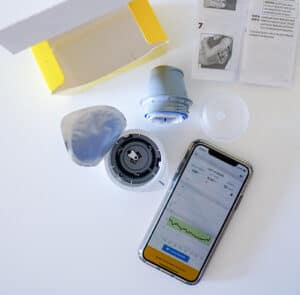
Innovations in medical technology play a huge role in improving preventive medicine and chronic illness management. Advancements in sensors and data collection methods allow healthcare workers to provide more accurate diagnoses and more effective care to their patients. At the same time, the increasing accessibility of health monitoring technology also gives people the ability to keep better track of their own health and fitness with hard data. Remote monitoring has become a favorable option for patients who can reduce the frequency of their regular doctor visits. All this reflects the potential for wearable technology to change healthcare operations.
Different types of wearable technology
Health and Fitness Trackers
Smartwatches and fitness trackers have taken the world by storm. Users can track their heart rates, sleep patterns, activity levels, and calorie burn, along with many other metrics that provide insights into their overall health. Consistently collecting these types of data can help users recognize improvements, declines, or irregularities in their health. More advanced trackers have built-in ECG monitors or photoplethysmography technology that helps prevent heart disease by identifying irregular or abnormally fast heartbeats, as well as other signs of atrial fibrillation. Research is already emerging that this is effective in the early detection and prevention of heart diseases.
Active monitoring of their quality of life can give people more incentive to live active and healthy lifestyles. The data and statistics that fitness trackers provide let the users know what aspects of their lives they can improve on, whether it be getting more sleep, exercising more, or working on their cardiovascular health. This information can be highly beneficial for preventing disease in the long run.
Vital monitors
Beyond smartwatches and fitness trackers that collect basic health data, wearable devices can also be used to monitor more specified vital signs consistently. This is especially helpful for those who suffer from chronic illnesses.
For instance, Omron created a smartwatch with a built-in inflatable cuff to accurately measure blood pressure. For those with diabetes, there are wearable continuous glucose monitors which track blood sugar levels throughout the day, notifying the user through their smartphone if levels are too high or too low.
As these devices are designed specifically for a particular disease, patients are more likely to trust the accuracy of the data, especially if a doctor prescribes the device. A survey also found that these specified devices ease patients’ worries of reporting inaccurate data or readings. Health professionals can then use the detailed data from the wearable device to provide more effective medical advice and treatments at check-ups.
The batteries that can support wearable medical technology
Batteries play an essential role in bringing wearable technology to life. Light and reliable, batteries are a good source of energy to power these devices on the go. Progress in battery technology would also mean improvement in wearable medical devices. A few battery types currently under development could give these devices a boost. Flexible batteries that can bend along with fabrics and straps could be used to create slimmer and more comfortable devices. Structural or massless batteries, where energy storage is incorporated into the structure of the device itself, would allow manufacturers to develop smaller and even possibly microscopic devices to track patients’ health.
As these devices are worn on the body, increasingly safer batteries would also benefit wearable technology. While lithium-ion batteries are generally safe, device mishandling could affect the stability of the battery. For example, a smartwatch that gets banged up through everyday wear could have battery damage that causes overheating, making the device hazardous to the user. Devices that require less maintenance would be particularly helpful for elderly patients who may not be as tech-savvy.
Contact us to learn how Arbin’s Battery Testing Equipment can support your next challenge.

